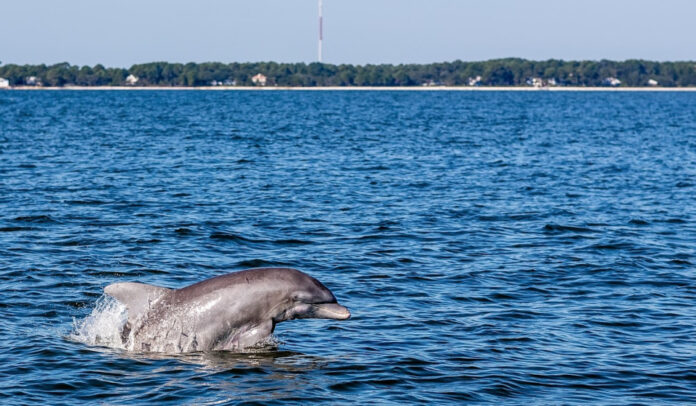We’ve always felt that our playful Lowcountry dolphins are a special breed, and now scientists have confirmed it to be true. Beaufort’s dolphins are a new species, separate from the other dolphins living offshore.
A new species of dolphin has been discovered, and it includes the ones we always see in Beaufort SC. According ro NOAA Fisheries, a recent collaborative study proposed, after nearly a decade of research, that common bottlenose dolphins inhabiting nearshore coastal and estuarine waters between New York and Florida are likely a separate species from their offshore counterparts.
The authors found that they are more closely related to other coastal populations in the Caribbean and Gulf of Mexico than their neighboring offshore common bottlenose dolphins.
Ana Costa, Ph.D., lead author and upcoming lecturer at the University of Miami, used multiple lines of evidence in her work and in doing so worked with several NOAA scientists. She worked closely with NOAA’s Southeast Fisheries Science Center, learning techniques from the genomics lab in Lafayette, Louisiana led by Patricia Rosel, Ph.D.
Costa was able to collect DNA and morphological data from tissue samples, skulls, and vertebral columns from dolphins that stranded along the East Coast. Many of these specimens were originally collected by members of the marine mammal stranding network and NOAA’s National Centers for Coastal Ocean Science. They were archived in several museums, including the Smithsonian National Museum of Natural History and the South Carolina State Museum.
Choosing a Name
In general, when there is a new species, the scientist who first describes them chooses both their scientific name and an English “common name.” The scientific name of these dolphins was previously Tursiops truncatus, also known as the common bottlenose dolphin. As part of the process to select the new scientific name, Costa went back to the first description of a coastal bottlenose dolphin from the U.S. East Coast published in 1865. She chose the first Latin name applied to these dolphins: Tursiops erebennus.
To determine their common name, Costa worked with her co-authors, including Eric Archer, Ph.D., a scientist at the Southwest Fisheries Science Center. They looked back to where the original specimen was collected, on the coast of what is now New Jersey. They consulted with the Nanticoke Lenni-Lenape Tribe, who are descendants of the original people that inhabited this area. Everyone agreed on the name “Tamanend’s bottlenose dolphin” after Chief Tamanend, who was known for his wisdom and peaceful nature.
More to Come
The research on this project took more than 8 years to conduct and follows on decades of previous research on this new species. And the journey isn’t over yet. More scientific research is needed to determine whether the coastal and estuarine bottlenose dolphins in the Gulf of Mexico are different from Tamanend’s bottlenose dolphins or are the same species.
This new taxonomic designation does not change the existing stock boundaries or protection status of the dolphins under the Marine Mammal Protection Act. However, we will evaluate potential management implications of this study.
Our local dolphins are also “strand feeders.” Strand feeding is some seriously sophisticated hunting that requires lots of teamwork, communication and timing, and it testifies to the ingenuity of dolphins. It’s pretty amazing.
It’s said to primarily only happen only here in the Lowcountry and in coastal Georgia, but it’s been reported in a few other places around the world as well.
Next time you see a dolphin in Beaufort SC, you’ll know that it’s different….that it’s special. Just like everything else here in our part of the Lowcountry.










